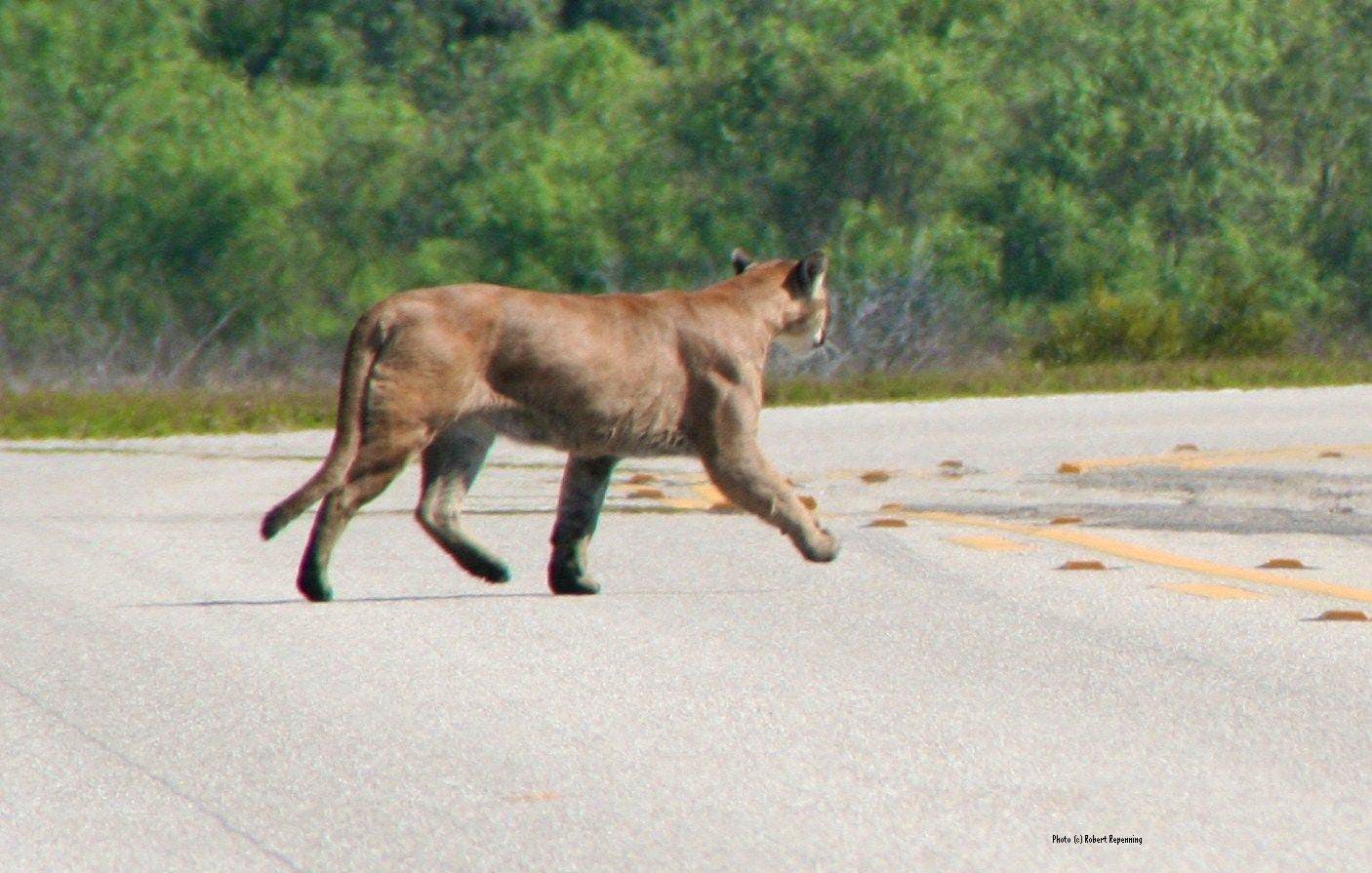Although deer continue to be the number one victim of wildlife-vehicle collisions, accidents on the road impact a wide range of animals. In a 2007 study on wildlife-vehicle collisions, the Western Transportation Institute compiled a list of 21 federally listed threatened and endangered species in the United States for which direct road mortality is among the major threats to the survival. That list not only included mammals like the San Joaquin kit fox, Canada lynx and Florida panther, but even reptiles like the American crocodile and birds like the Florida scrub jay. Watch our video to see the full range of listed species.
Sadly, those are only the animals that are affected by direct collisions with vehicles. If the study had included other impacts of roads and associated development, such as habitat loss and fragmentation, that list would have been much, much longer.
Florida panther: Poster child for the road to extinction?

Extensive development has left Florida panthers with little room to roam and dangerous highways to cross in their wide-ranging quests for food and mates. Photo © Robert Repenning
With only an estimated 100 to 160 remaining in the wild, Florida panthers are one of the most endangered mammals in the world. Meant to range over large areas in search of food and mates, these cats are forced to crisscross the Sunshine State’s dangerous highways all too often. As a result, collisions with vehicles take a terrible toll on panthers—16 were killed on Florida roads in 2010, and a record-breaking 17 in 2009.
Fortunately, progress is being made to protect these big cats. Next week, builders will break ground on a Remote Animal Detection System (RADS) in Florida’s Big Cypress National Preserve. The preserve is a stronghold for the Florida panther, with the Turner River area specifically providing prime panther habitat. But the roads that cross the preserve also make it a very dangerous place for the endangered cats, especially breeding females and their kittens. By detecting large animals like panthers on the Turner River area of US 41 and alerting drivers of their presence, the system is intended to cut down on the amount of cats killed on the road.
Defenders is hopeful that the RADS project will raise awareness about the need to drive carefully and watch out for wildlife in Big Cypress National Preserve. We will continue to work for long-term solutions to make this deadly stretch of road safer for wildlife and people, from increased awareness and law enforcement in the panther zone to exploring the possibility of safe passage under and over busy roads.



